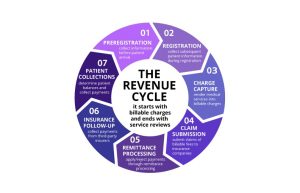Step five in the revenue cycle is remittance processing. Once a practice’s claims have gone out, they will get remittances back. The explanation of benefits shows the practice what they got paid for the services provided. During this process, allowables are determined. Allowables are what the provider has contracted with the insurance carrier on a service provided. The provider and carrier negotiate the contract, at which time the insurance company will confirm how much they will pay for each service.
One common mistake during the remittance process is “post and go.” As electronic posting has become the norm for the revenue cycle, a practice can encounter problems when they post remittances and never look at them again. For example, if a carrier does not pay or something is set up incorrectly in the practice management system, the error could get missed in the “post and go” scenario. If no one is reviewing the process or the reports, a practice could miss the chance for an appeal and thus an opportunity to correct a mistake.
Another element of remittances are fee schedules, which are the amounts providers charge for each of their services. Providers should review their fee schedules on an annual basis to make sure they are in line with adjusting rates, contracts, and allowables. Evaluate your fees regularly to make sure you are not leaving money on the table.
The final piece of the remittance process includes write-offs, both contractual and non-contractual. Contractual write-offs are unpreventable, as they involve contracted rates with carriers and payers.
On the other hand, non-contractual write-offs are avoidable; they include write-offs that would have not happened with a tight process in place, either at the beginning, the end, or somewhere along the way. Avoidable write-offs are generally the result of a breakdown in the provider’s remittance process and can be prevented by looking at reports. Red flags include no authorization, no referral on file, and claim not submitted in a timely manner.
There are multiple points in the remittance process that can affect your revenue cycle. If you are unsure about your remittance process, consult an expert to do a deep dive.


